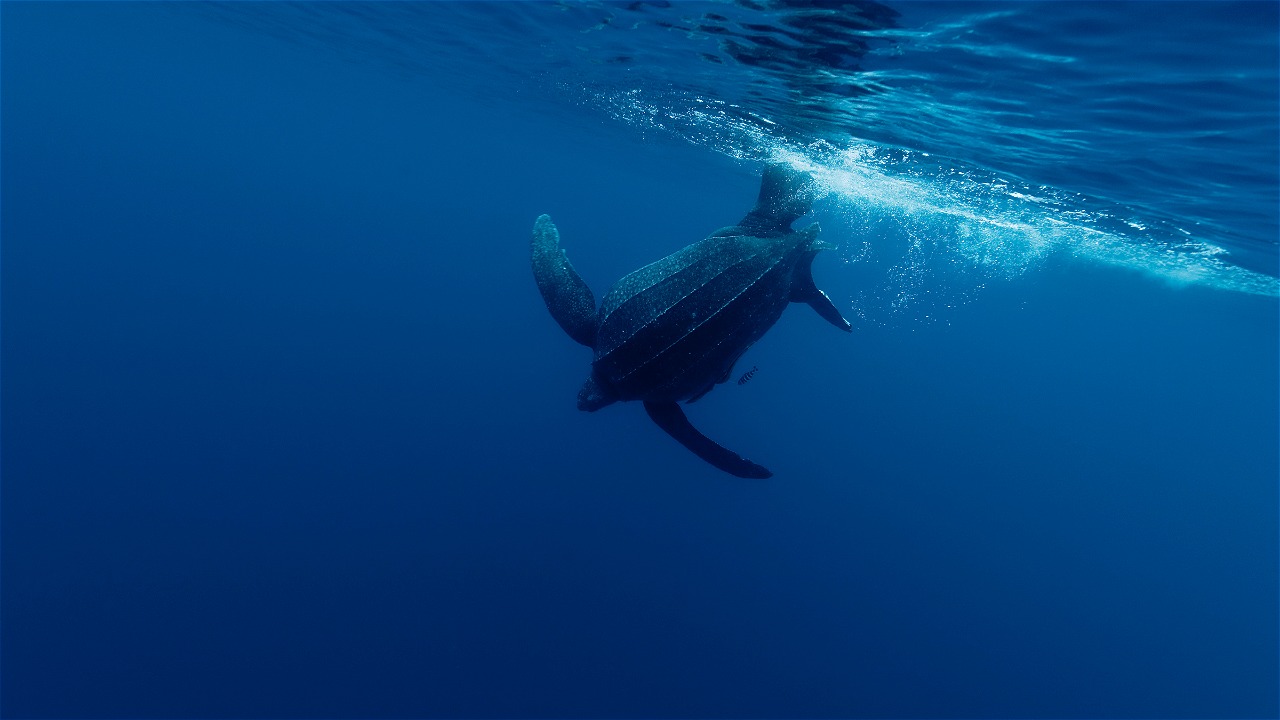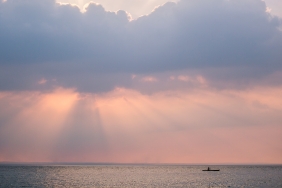GILL NET, THE FAVORITE FISHING GEAR OF SELAYAR FISHERMEN, NETS THE MOST SEA TURTLES
By: Bintang Prayoga (Marine Science Diponegoro University, Bycatch & Sharks Conservation Intern, WWF-Indonesia)
For fishermen, fishing gear (API) is the most important weapon in going to sea. Ranging from fishing rods to nets, fishermen's preferences in using these fishing gears vary, for various reasons, as do fishermen in the Selayar Islands, South Sulawesi. Marine products are the mainstay of this region's original income. A wide variety of fishing gear is used to catch different consumable fish.
There were interesting findings when we, WWF-Indonesia, conducted a rapid survey of the potential bycatch (bycatch) of Endangered, Threatened, Protected (ETP) biota in Selayar fishermen's fishing gear, January 10-23, 2017.
Together with Selayar's Marine and Fisheries Agency (DKP), Takabonerate National Park Agency (BTN) and local partners, we gathered information from five western villages in the north of Selayar Island, namely Maharaya Village, Buki Village, Barugaia Village, Mekar Indah Village and Bontolebang Village.
Of the 73 fishermen we interviewed, most used gill nets as fishing gear, with a percentage of up to 40.5 percent. Other than gill net fishermen, 21.73% used purse seine, 14.49% used sero, 13.04% used hand line, 7.24% used longline, and 2.89% used bagan.
Why is gill net the favorite? Gill nets are generally made of monofilament and are square, horizontally stretched in length, with a float at the top of the net and a weight at the bottom. The mesh size used by Selayar fishers to catch reef fish usually ranges from 1-4 inches.
Fishermen choose gill nets because they are relatively cheap to produce, with materials that are easily available. Not infrequently, they utilize used sandals as a substitute for floats for the net.
However, in addition to meeting the target fish needs of fishermen, it turns out that gill net is one type of API that has a high potential for accidental sea turtle capture (bycatch). Throughout 2016, 36 gill net fishers we interviewed claimed to have caught a total of 47 sea turtles. They ranged from loggerhead turtles, flatback turtles, hawksbill turtles, to Olive Ridley turtles.
The mesh size and operating technique of the API largely determines the catch of sea turtles when fishing. The potential for turtle bycatch using gill nets is quite high. Bycatch of sea turtles caught with gill net is 66.7%, while in other fishing gear it is only 33.3%.
These turtles were usually caught accidentally at fishing sites not far from the village. From an average of 29 respondents' fishing trips, up to two turtles were caught in a month, or at least 24 turtles per year in each village.
It should be appreciated that 99% of the respondent fishermen released the accidentally caught turtles, while the rest still consumed the caught turtles. They tear the net on the body part of the turtle that is caught, and return it to the sea.
Of course, it requires special skills to handle turtle bycatch on a boat. The turtle to be released must be healthy and conscious, with no nets still attached to its body.
This will be the next step for WWF-Indonesia in assisting Selayar fishermen. The overwhelming hospitality we received from the community during yesterday's survey makes us optimistic that in the future, BMPs (Better Management Practices) for handling sea turtle bycatch will be properly implemented on Selayar fishermen's boats.





